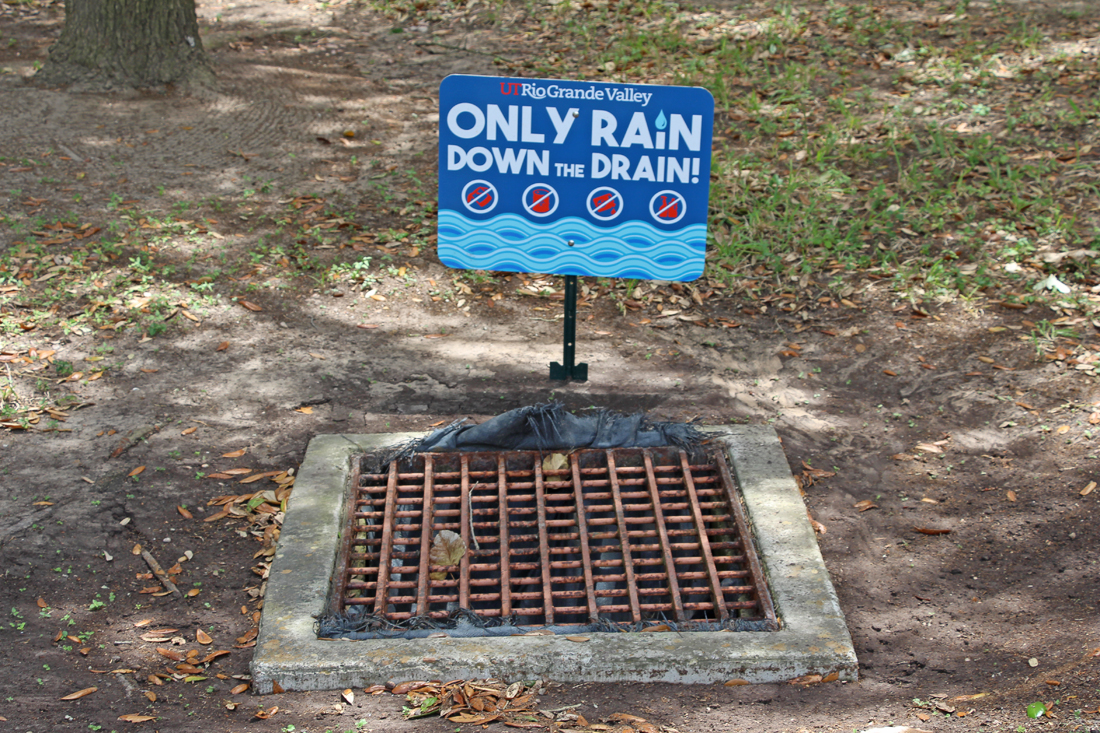
A storm drain outside of the EACSB building on the Edinburg campus. Gabriel Mata/The Rider
As an area that is prone to flooding, the Rio Grande Valley is one of many urban areas that have adopted a Municipal Separate Storm Sewer System (MS4) as a vital part of its infrastructure.
MS4 systems are publicly owned storm sewer systems that assist in redirecting rainwater in order to alleviate flooding in urban areas.
These systems encompass “ditches, curbs, gutters, storm sewers and similar means of collecting or conveying runoff that do not connect with a wastewater collection system or treatment plant,” according to the Texas Commission on Environmental Quality website.
In 2007, the Environmental Protection Agency determined that most of the contaminants going into the Valley’s water sources, specifically the Laguna Madre, are coming from storm sewers rather than sanitary sewers.
Richard Costello, director of Environmental Health, Safety and Risk Management at the University of Texas Rio Grande Valley, said that many of these pollutants come from construction, such as that which takes place on campus, but much of them can be attributed to toxic substances such as paint or oil that people pour down drains or gutters without knowing that they are toxic.
“Silt coming from construction sites has a tendency to clog the gills of the fish in the Laguna Madre, which actually contains 60 percent of the fish in the Gulf of Mexico,” Costello said. “What we’re trying to do is implement measures on this specific campus in order to reduce the contaminants that go into the storm sewer.”
Although MS4 systems are run by municipalities, Costello said that as the issue begins to grow, the institution is now responsible for a minimum of five control measures to combat this problem.
Among these control measures is public outreach, which can be seen through the various signs across campus saying, “Only Rain Down the Drain!” Also, a phone number is provided on the “UTRGV’s Guide to a Clean Stormwater System” pamphlet, to call if anyone is seen not complying with measures so that they may be properly addressed.
“Considering that our campus has roughly 17,000 commuting students, we hope that they will take this information home with them,” Costello said. “Hopefully, this kind of outreach will be remembered by students the next time they make the decision to pour oil or paint down the drain, or toss leaves and grass down the gutter.”
More information on pollutants and preventative measures can be found at the Office of Sustainability or Environmental Health, Safety and Risk Management department.






